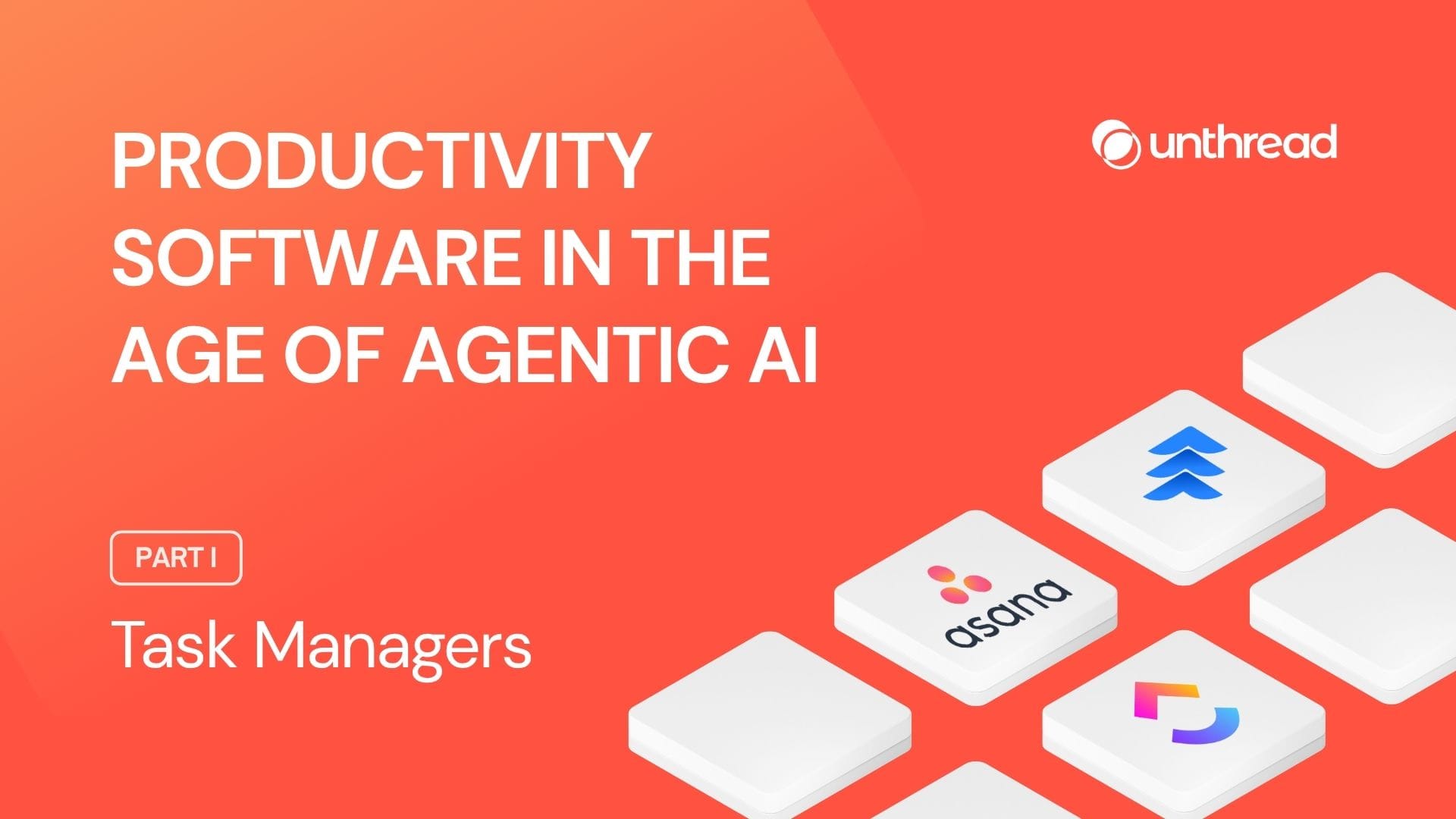Productivity Software in the Age of Agentic AI – Part I: Task Managers
This is the first in a multi-part series taking a look at the productivity software suite and what's changing as Agentic AI works its way further into our daily work lives.

This is the first in a multi-part series taking a look at the productivity software suite and what's changing as Agentic AI works its way further into our daily work lives.
Atlassian, one of the most well-known productivity software suites, is used by more than 300,000 companies, including 80% of the Fortune 500. Originally founded in 2002, it has grown over the past few decades to a whopping $50 Billion market cap as of writing, and there's no doubt that you've across their products in your professional career. Despite its current ubiquity, Atlassian faces challenges ahead as the enterprise software landscape fundamentally shifts and adapts to how work gets done with AI agents working alongside humans.
👷♂️ Background: The "Jobs-to-be-Done" Framework
To do this analysis, we're going to leverage the Jobs-to-be-Done framework, or JTBD. This framework was popularized by Clayton Christensen, a Harvard Business School professor, and focuses on out the desired outcome rather than the process to get there.
🥤 Milkshakes: a Classic JTBD Example
The typical example of the JTBD framework is to imagine a fast-food restaurant selling milkshakes. The non-JTBD approach is to think about milkshake features that can entice users– e.g. flavors, colors, fun packaging, discounted prices. The JTBD approach asks a different question: what "job" is the milkshake performing for buyers?
Surprisingly, research found that users were primarily buying milkshakes on their morning commute to stay occupied and full. So, rather than think about marketing solutions, they focused on solving this problem. The result: sizes that fit nicely in cupholders, easy grip to grab while driving, and long-lasting to ensure thickness throughout the commute. After making these changes, the restaurant sees a drastic increase in milkshake purchases.
📥 Task Management Reimagined with Agentic AI
The traditional solution for task management involves many features, like a kanban board, ticket categories, comment threads, and more. Even taking a JTBD approach, we can see that old ticketing tools are built around a job such as:
❌ "Help me track and prioritize my tasks to complete."
Seems reasonable enough, and you can draw the lines between this question and the current set of ticketing tools on the market today. However, how does this change in a world of agentic AI?
✍️ Reframing Expectations of What's Possible
With agentic AI, we can be more ambitious with our JTBD in a way that would have sounded crazy 5 years ago. Instead of thinking about how a task manager organizes the tasks you will complete, think about how you can organize tasks that AI will complete for you. This changes the objective away from helping me to complete tasks and instead into the true objective of completing the tasks as quickly as possible.
🎯 Thinking AI-First
Let's consider a new JTBD definition, and ask ourselves, how does this change the approach and feature set to support this use-case?
✅ "Complete my task list as quickly, accurately, and autonomously as possible."
We can now focus on how to enable and empower the AI to solve routine tasks instantly without human intervention. Rather than kanban boards, complicated UIs, and custom dashboards, we can focus on what the AI needs: clear instructions and a feedback loop of self-learning. This supports our goal of tasks being completed instantly and accurately without human intervention.
🏗️ How Jobs Should Be Done
With our jobs to be done reframed and expectations shifted, how does this impact the tools that are built to support it? Let's consider some of the key concepts we captured in our JTBD statement:
- Speed – how quickly we accomplish tasks. Maximizing speed means using the latest models and dynamically using models optimized for each individual task.
- Accuracy – lowest error rate possible. This requires a feedback loop, both with human confirmation and environmental feedback to confirm tasks are not just completed but completed correctly.
- Autonomy – littlest human intervention possible to achieve accuracy and speed goals. To achieve this, Agents need to be given access to tools that can interact with systems in a read/write capacity, along with access control and permissioning in place.
These are all attributes required in building an effective AI agent that can drastically change the way that we work.
Conclusion
As Agentic AI reshapes the way we work, the role of productivity tools has completely changed. By rethinking our work with the jobs-to-be-done framework, accuracy, and autonomy, we see that entirely new product paradigms should exist. New tools in the productivity space like Unthread are looking at service management and ticketing through this lens, and are able to automate a substantial amount of work that wouldn't have been possible just a few years ago. If you're not leveraging Agents in your work today, you risk being left behind.
Next up in the series: Knowledge Bases and Documentation

